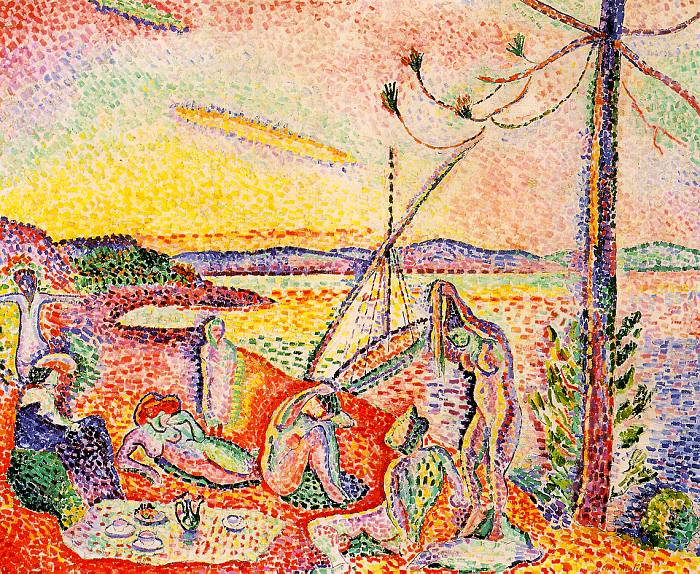

For a man immortalised by his wails of rainy misery from the moors of Withnail and I, you would expect Richard E Grant to be very happy on the Riviera. He is, with the suave aristo manner of the Englishman abroad. Which is fitting for The Riviera: A History in Pictures, because the Riviera practically belonged to the Brits - we hivernots, winter escapers from northern cold - before the French realised it was there at all.
I’m not sure that A History in Pictures quite knows what it is aiming for: Grant is a personality presenter - the last series he did was Hotel Secrets for Sky. The tone hovers between BBC Four and the Holiday programme. This is as much social history as art history anyway. Essentially the Riviera became important not in itself (as for the Impressionists [3]), but because a lot of famous people - including an awful lot of artists - ended up there.
It seems strange to Grant that Matisse painted mainly figures in interiors when it was so sunny outside
It's possible to quibble with plenty of the programme's artistic assumptions. For starters, it made no distinction between the Riviera itself and the wider territory of Provence, which wasn’t so unknown to artists - Cézanne [4], after all, was born there. And it's not as if the sea itself had never been painted before. But the attraction of the Riviera was that it brought out yellow and violet colours from Monet [5] rather than the blues and greys of his Normandy coastal paintings. The climate meant quite often there were naked or partly clothed figures to be painted (cue, far too often, shots of modern beaches and various stages of nudity), as well as year-round greenery, and some lovely gardens.
 Were the artists really the first explorers, or did their arrival more or less coincide with that of the railways, which opened the Riviera up, and would change it from undeveloped paradise to what it is today? Matisse’s 1904 painting Luxe, Calme, Volupté (pictured right) is a key work: the figure bottom left in dark clothing is a tourist who’s brought her picnic tea to what could otherwise be a gathering of classical nymphs or local fisherwomen.
Were the artists really the first explorers, or did their arrival more or less coincide with that of the railways, which opened the Riviera up, and would change it from undeveloped paradise to what it is today? Matisse’s 1904 painting Luxe, Calme, Volupté (pictured right) is a key work: the figure bottom left in dark clothing is a tourist who’s brought her picnic tea to what could otherwise be a gathering of classical nymphs or local fisherwomen.
Its title came from Baudelaire’s poem “L’Invitation au voyage”, from Les Fleurs du Mal. But when Matisse came back to Nice a second time - unlike Delacroix in North Africa or Gauguin in Tahiti - he wasn’t looking for a place to explore, but to rest up and work. It seems strange to Grant that Matisse, who came to be nicknamed the "Sultan of the Riviera", painted mainly figures in interiors when it was so sunny outside.
The first explorers may have come because the Riviera was new, or because it was cheap, but they stayed because it was sunny, and then were joined by everyone else, including the Russians, without whom the Riviera wouldn’t have been what it was (though Russian painters still prefered Northern France). The name I’d never heard of here was that of the Russian Cubist Leopold Survage, who often put the silhouette of a figure in black hat and dark glasses into his paintings. You just wish Grant hadn't popped up immediately in similar garb to make the point.
Links
[1] https://theartsdesk.com/users/tom-birchenough
[2] https://www.addtoany.com/share_save
[3] http://www.theartsdesk.com/topics/impressionism
[4] http://www.theartsdesk.com/visual-arts/c%C3%A9zannes-card-players-courtauld-gallery
[5] http://www.theartsdesk.com/tv/fake-or-fortune-episodes-1-2-bbc-one
[6] https://theartsdesk.com/node/43895/view
[7] https://theartsdesk.com/node/4131/view
[8] https://theartsdesk.com/visual-arts
[9] https://theartsdesk.com/tv
[10] https://theartsdesk.com/topics/picasso
[11] https://theartsdesk.com/topics/france
[12] https://theartsdesk.com/topics/reggae
[13] https://theartsdesk.com/topics/reviews